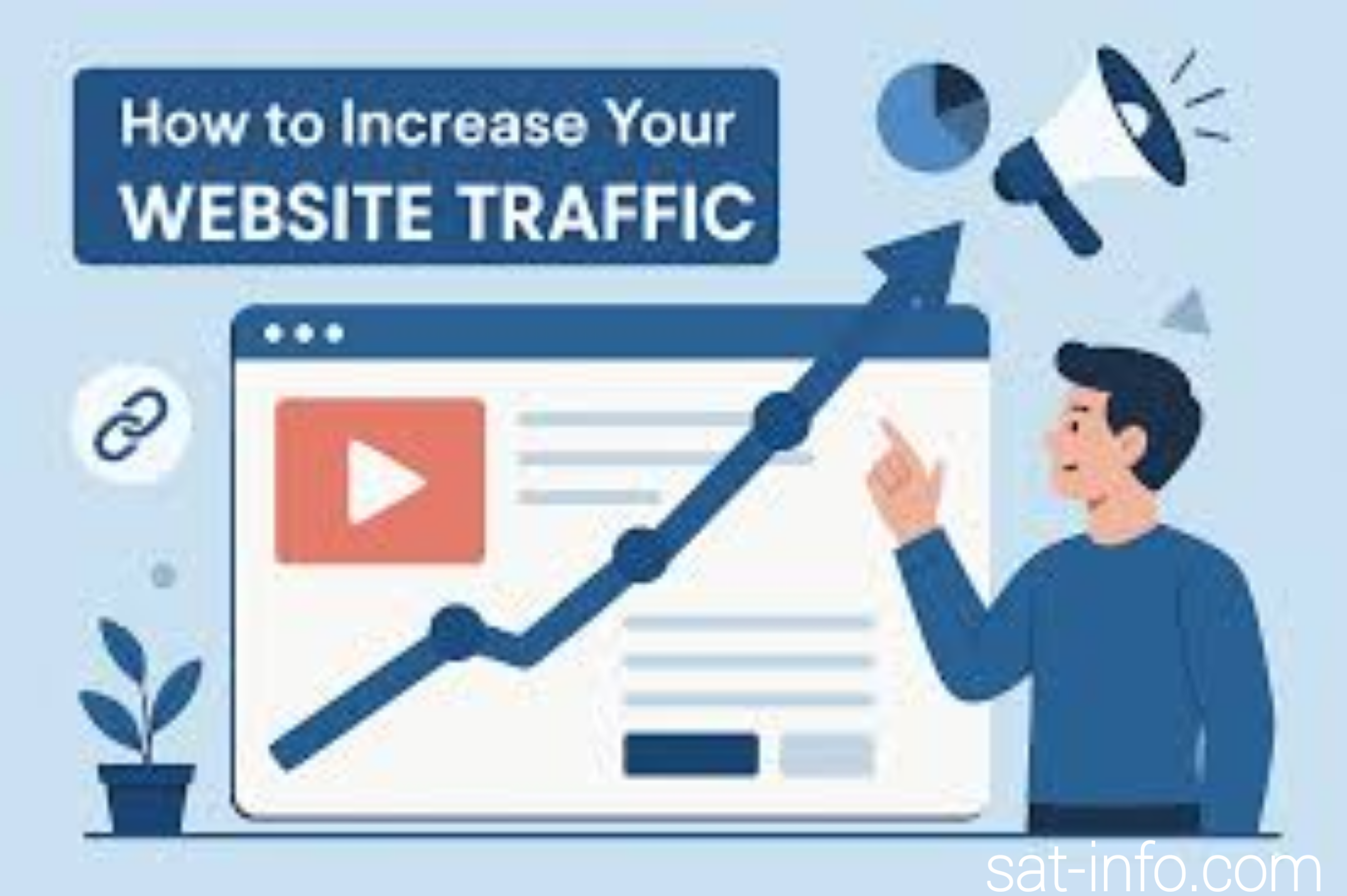In today’s digital age, having a website is not enough. Whether you’re running a blog, online store, portfolio, or news portal, your success depends on one key factor: traffic. More traffic means more opportunities for conversions, ad revenue, and brand exposure.
So, how can you drive consistent and high-quality traffic to your website in 2025? This article will walk you through the most effective strategies—both free and paid—to help you attract visitors and grow your online presence.
1. Focus on Search Engine Optimization (SEO)
SEO is still the most powerful long-term traffic source. Optimizing your website for search engines helps you rank higher in Google results, making it easier for people to find you.
Tips to boost SEO:
-
Use Keywords: Research high-volume keywords related to your niche using tools like Google Keyword Planner, Ahrefs, or Ubersuggest.
-
On-Page SEO: Include keywords in your title, headings, meta descriptions, and content naturally.
-
Create Long-Form Content: Google prefers in-depth articles (1,000+ words) that answer users’ questions.
-
Mobile-Friendly Design: Ensure your site is responsive and loads fast on mobile devices.
-
Use Internal Linking: Link to other relevant articles on your website to keep users engaged.
Bonus Tip: Update your old posts regularly with fresh content and keywords to maintain your rankings.
2. Start a Blog and Post Regularly
A blog is a traffic magnet. It allows you to target a variety of keywords and provide value to your audience. Google also favors websites that are frequently updated.
How to blog for traffic:
-
Post helpful, well-written articles (like this one!) every week.
-
Solve specific problems or answer common questions.
-
Share personal stories, case studies, or tutorials in your niche.
Example: If you have a tech blog, write a post like “Top 5 Free IPTV Apps for Android in 2025”—these kinds of articles get shared and searched for often.
3. Leverage Social Media
Social media platforms can send massive traffic to your website if used correctly.
Platforms to focus on:
-
Facebook: Create a page, join niche groups, and share your posts.
-
Instagram: Use visuals and Reels to link to your site via bio or Stories.
-
Pinterest: It’s a hidden gem for blog traffic—create attractive pins for your articles.
-
X (Twitter): Share links with trending hashtags and tag relevant accounts.
-
YouTube: Convert blog posts into videos and include your website link in the description.
Tip: Add social sharing buttons to your website to encourage visitors to spread your content.
4. Use Email Marketing
Email is one of the highest-converting sources of repeat traffic.
Steps to get started:
-
Add a newsletter signup form on your site.
-
Offer a freebie (e.g., ebook, checklist, or course) to encourage signups.
-
Send regular emails with tips, updates, or links to your new posts.
Tools like Mailchimp, ConvertKit, or MailerLite make this process easy—even for beginners.
5. Participate in Online Communities
Engaging in niche-specific forums, Reddit, or Quora can build your credibility and drive traffic.
Best practices:
-
Answer questions genuinely without spamming your link.
-
Add value and include your website only when it’s truly helpful.
-
Join communities like Stack Overflow (for tech), Health forums, or relevant Facebook groups.
Example: On Quora, if someone asks “How can I increase website traffic?”—you can answer with your tips and link back to your article.
6. Invest in Paid Advertising (Optional but Effective)
If you have a budget, paid ads can bring instant traffic.
Ad platforms to consider:
-
Google Ads: Appear at the top of search results for target keywords.
-
Facebook Ads: Run targeted campaigns based on user interests and behavior.
-
YouTube Ads: Promote your content through skippable ads or banners.
Start small—test your ads, monitor performance, and scale up once you find what works.
7. Collaborate with Influencers & Bloggers
Influencer marketing can give your site a significant traffic boost, especially if you’re in a competitive niche.
Ways to collaborate:
-
Guest post on high-traffic blogs.
-
Partner with influencers for shoutouts or reviews.
-
Offer to write expert contributions or case studies in your field.
Even micro-influencers (1,000 to 10,000 followers) can drive quality traffic if their audience is highly engaged.
8. Use Google Search Console & Analytics
Understanding what works is key to improving. Google provides free tools to help you monitor and optimize your traffic.
Use these tools for:
-
Finding which keywords bring visitors to your site.
-
Identifying your most popular pages.
-
Tracking bounce rate, session duration, and conversion rates.
Check your data weekly to refine your content strategy.
9. Make Your Content Shareable
Great content should be:
-
Easy to read (short paragraphs, headings, bullet points).
-
Visually appealing (images, infographics, videos).
-
Actionable (provide steps or tips the reader can apply).
Encourage sharing by adding call-to-actions like:
“Found this helpful? Share it with your friends!”
10. Be Consistent and Patient
Growing your website traffic takes time. The key is consistency. Don’t get discouraged if results are slow at first—keep creating, keep promoting.
Remember: Every big website started with zero traffic.
Conclusion
Driving traffic to your website is a mix of smart strategy, quality content, and persistence. Whether you choose SEO, social media, email marketing, or paid ads, the most important thing is to understand your audience and provide real value.
Start by implementing just a few of these strategies, and scale up over time. With the right approach, your traffic will grow—and so will your online success.

